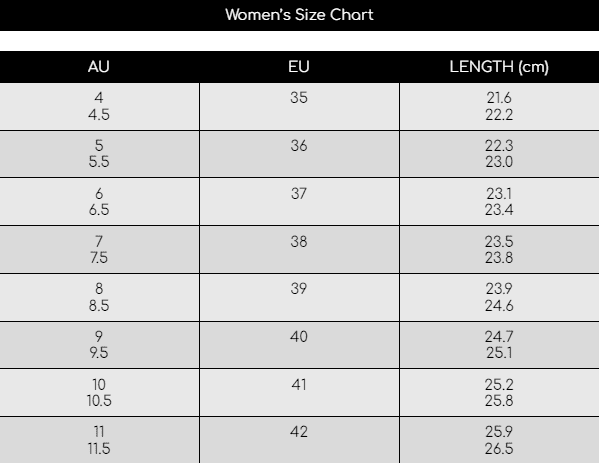Welcome to the Ultimate Guide to AUS Shoe Size Conversion for Kids!
Hey there, super parents! Are you tired of the confusion when it comes to shoe shopping for your adorable munchkins? Well, bounce off the walls no more, because this AUS Shoe Size Converter Guide is here to make your life a whole lot easier!
Have you ever found the cutest pair of shoes, only to discover they’re not in Aussie sizing? Or maybe you’ve ordered a pair online, confident in the size, only to have the disappointment of them not fitting your child’s growing feet? Navigating through different shoe size systems can be as tricky as convincing a toddler that veggies are delicious (we know, right?). But fear not, because this comprehensive guide is your secret weapon to mastering the art of AUS shoe size conversion for your little ones!
We’ve got you covered with easy-to-understand charts, tips, and tricks that will make finding the perfect fit for your child’s feet as easy as pie – and we mean the good kind, with whipped cream and everything! So, tighten your shoelaces, and let’s dive into this foot-friendly adventure together!
Understanding AUS Shoe Size for Kids
Before we take a step further, let’s understand that Australian children’s shoe sizes are based on the length of the feet in millimetres and typically start from size 4 or 5, going up to size 13 before transitioning into adult sizes. It’s essential to regularly measure your child’s feet as they can grow faster than a bamboo plant in the right conditions!
How to Measure Your Child’s Feet at Home
Measuring your child’s feet at home is easier than convincing them that the monster under the bed is just a pile of clothes (it usually is!). All you need is:
- A piece of paper larger than your child’s foot
- A pen or pencil
- A ruler or measuring tape
Here’s a simple step-by-step process to get the right measurements:
- Place the paper on a flat surface and have your child stand on it with their heel against a wall.
- Mark the top of their longest toe on the paper with your pen or pencil.
- Measure the distance from the edge of the paper (where their heel was) to the toe mark. That’s the foot length!
- Repeat with the other foot (yes, they can be different sizes) and use the larger measurement to determine the shoe size.
Remember, it’s best to measure feet at the end of the day, as they tend to swell slightly, ensuring you get a size that won’t be too snug.
Conversion Charts: Making Sense of Sizes
Kids grow at the speed of light, and their shoe sizes seem to change with every full moon. Australian sizes might differ from US, UK, or European sizes, but don’t worry! Our conversion charts will be your trusty sidekick in this shoe-sizing saga. Whether you’re jet-setting with your family or shopping from international brands, we’ll help you convert those sizes like a pro!
Keep your eyes peeled for our comprehensive charts (coming right up in this ultimate guide!) that’ll serve as a handy reference the next time you’re battling the shoe section, online or in-store.
Tips for Shoe Shopping for Kids
Let’s tie up this section with some golden tips for shoe shopping:
- Always measure feet before buying new shoes; size can change every few months!
- Look for shoes with a bit of ‘wiggle room’ – around half an inch of space in the toe area
- Check for a secure fit around the heel and ankle to prevent blisters and ensure comfort
- Pick breathable materials like leather or canvas for healthy foot development
- Opt for flexible soles that can bend with your child’s foot movement
Congratulations! You’re now on your way to becoming an AUS shoe size converting ninja! Stay with us as we continue our journey into the world of kids’ shoe sizes, and never let a size chart intimidate you again. Is everyone’s shoelaces tied? Good, because this is where the real fun begins!

Your Complete Resource for AUS Shoe Size Conversion for Kids
Greetings, lovely parents! Struggling with shoe sizes for your munchkins? Stress no more! The AUS Shoe Size Converter Guide is here to make your life and shoe shopping session a walk in the park!
Stumbled on adorable shoes not in AUS sizing? Ordered the perfect size online just to face a misfit? We understand. Let’s jump into the guide then, and we’ll make sense of AUS kids’ shoe sizes together!
Decoding AUS Shoe Sizes for Kiddos
Australian shoe sizes are gauged in millimeters, starting from 4 or 5 for tots and going up to 13. Remember, kids’ feet grow as swift as the wind – measure them regularly!
Home Measuring: A Cinch!
Equip yourself with:
- Large paper. Pencil. Ruler or tape – that’s all!
Measuring’s as easy as pie! Here’s how:
- Flat surface. Paper down. Child stands with the heel to wall.
- Draw a line at the longest toe’s tip.
- Measure from the heel wall to the toe line – voila, foot length!
- Measure both feet – they can be unique like snowflakes.
A Tale of Conversion Charts
Your children’s feet grow faster than a beanstalk, and size charts have the answers. These nifty charts will be your spellbook to decoding those tricky sizes, no matter where your shopping tales take you.
Five Must-Know Tips Before Facing the Size Converter:
- Stay Updated: Children’s feet size can shift quicker than seasons. Measure before every shoe purchase.
- Wiggle Room Matters: Aim for a thumbnail’s length of space at the toe – growth and comfort in one.
- Secure Heel, Happy Feet: Slippery heels? A no-go. Ensure the back is snug, not tight, to dodge blisters and secure steps.
- The Right Stuff: Breathable materials like canvas or leather encourage happy, healthy feet.
- Fancy Footwork: Flexible soles mean little feet can move naturally. Bend that shoe; if it twists with ease, it’s a green light!
Embarking on the Shoe Sizing Adventure
You’re well on your way to becoming a size wizard! With these treasures of knowledge, may every pair of shoes you choose be a victory in comfort and style. Ready? Let’s get those perfect fits!
For more great articles please see here. For more information see here
Disclaimer
The articles available via our website provide general information only and we strongly urge readers to exercise caution and conduct their own thorough research and fact-checking. The information presented should not be taken as absolute truth, and, to the maximum extent permitted by law, we will not be held liable for any inaccuracies or errors in the content. It is essential for individuals to independently verify and validate the information before making any decisions or taking any actions based on the articles.




